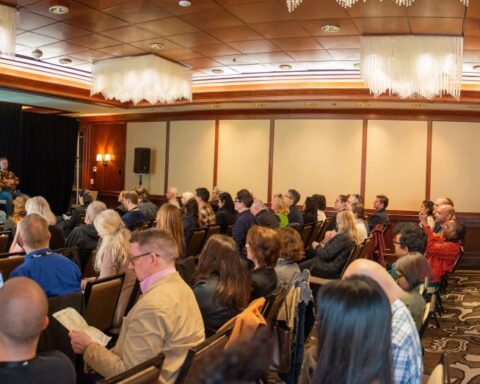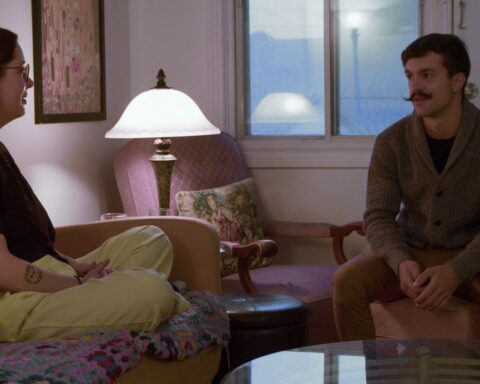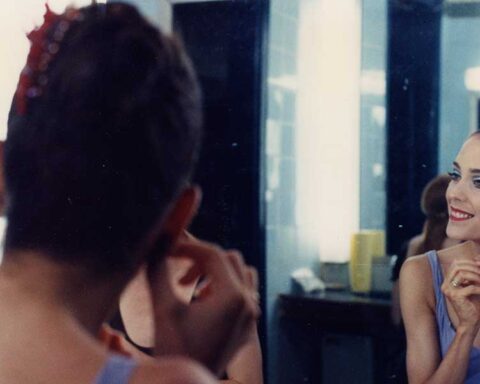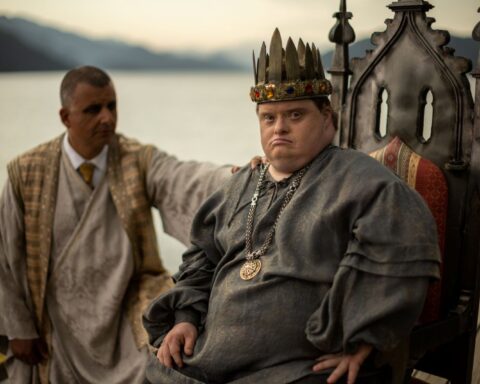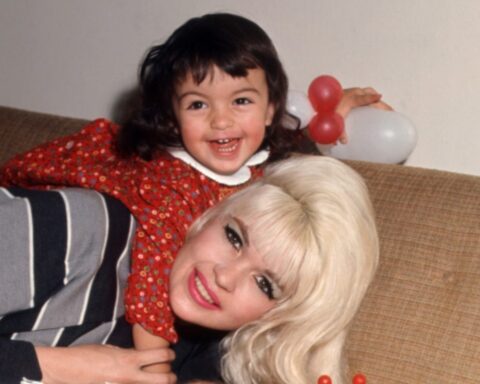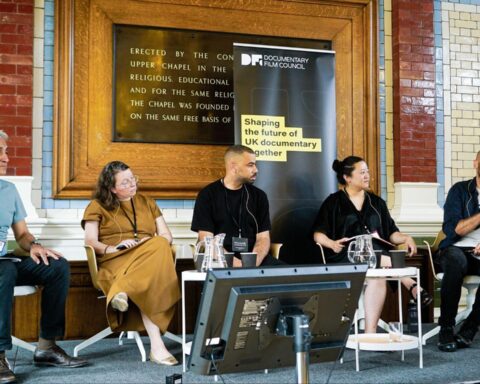Released in 1993, Derek Jarman’s final film, Blue, was a single-take, 79-minute meditation on the titular colour accompanied by soundtrack recordings of the director and his friends discussing his life and audacious career. The story of the film’s production—Jarman was in the late stages of death by AIDS-related complications and partially blind—gave it a valedictory heft and a measure of mainstream success. Nearly 20 years after its release, it is routinely described as one of the most famous “experimental” films of all time.
Jarman’s gambit was undeniably affecting: a lifetime of crafting provocative, taboo-busting images encapsulated in a film entirely bereft of the same. But while Blue surely resonated as a personal testament, it was hardly unprecedented in formal terms. Seven years earlier, the Canadian filmmaker Mike Hoolboom had dropped a similar gauntlet with White Museum, which unravelled 32 minutes of clear leader accompanied by a cacophonous sound collage and the director’s own voiceover. “Now that the credits have finished, we usually get into the film and start to see what’s happening,” Hoolboom intones wryly over the non-image of a white screen. “But the truth is I just don’t have enough money.”
Of course, there’s more to White Museum than a blanked-out self-portrait of starving-artist-hood. In an essay reprinted on the director’s website, Gerard Saul argues that White Museum can be interpreted as the director’s “transition away from structuralism towards poetic films…[the transition] hinged on [his] realization of the importance of storytelling to him and to his viewers.”
This embrace of the poetic is surely apparent in Hoolboom’s new film Mark, which makes its Canadian premiere in April at the Hot Docs International Documentary Film Festival. The film’s title refers to Mark Karbusicky, Hoolboom’s longtime friend and editor—and also a passionate animal-rights activist—who killed himself in 2005 at the age of 37. Intricately arranged out of home movies, interviews, found footage, re-enactments and snippets of Hollywood blockbusters (blink and you’ll miss the flying cow from Twister [1996]), Mark inherits elements from some of the director’s earlier efforts. Its most obvious recent forebearers are Tom (2002), which profiled the New York video artist Tom Chomont, and also the unofficial diptych of Imitations of Life (2002) and Public Lighting (2004), which parsed issues of biographical representation.
But it’s also palpably different than those films: it’s more fragile than heady. “Mark and I made movies for many years together, sitting in the dark of our lives, watching pictures scroll past,” says Hoolboom via email. “There were many difficult decisions to be made during this one, decisions which another filmmaker, a little further removed from events, would have judged simply in terms of the movie and its requirements. Instead, I needed to follow the ghost of my friend, and ask again: what would Mark want? What would Mark do now?”
“I was very fortunate in having access to an unusual archive kept by Mark and his life partner Mirha-Soleil Ross,” he adds. “They had organized two trans art/performance fests which were extensively documented, along with talks, demonstrations, and public acclamations. [Ross was the Grand Marshall of the Toronto Queer Pride Parade in 2001.] Secreted between these very public declarations were home movie moments, a cross-country trek to visit Mark’s parents, a video letter home, Mark eating noodles. I was very fortunate in having access to this. To watch him jump up on a rock, or paddle a canoe, that was thrilling beyond measure.”
Thrilling, but also painful: to hear Hoolboom describe it, Mark is as much an exorcism as a tribute. “I attached dangerous fantasies to this movie, though these are only beginning to be admitted now, in the wake of their too obvious failure. Mark’s death, like many catastrophes, seemed an endlessly renewable gift, and occasioned many ugly scenes and confrontations. Death threats, hospitalizations, police…It was my hope that this movie would at least join ‘us’ in a celebratory communion, or at least allow our friend to walk on water again. These hopes also seem like part of another time, someone else’s script. The someone else who might have begun this project, for instance, which I couldn’t imagine doing now—no matter how often the ghost knocks on the door. Why make this movie? To let him say what he couldn’t. To let us all say what we weren’t able to say when it mattered, when he was still here. To allow us to speak when it is too late, after the doors have closed, and everyone has gone home, and it’s all been forgotten. To hold up this small movie, this small life, and ask that it too might be counted.”
Mark succeeds on this count—its eponymous subject is rendered vividly and vitally. But its relentless visual presentation also gets at something very troubling. For all of the video footage that exists of Mark Karbusicky—shots of him tending feral cats, relaxing with friends, doing a mean Debbie Harry drag performance at a CIUT event—it would seem that nobody really saw him: his suicide struck even those closest to him as a complete surprise. While Hoolboom’s swirling aesthetic can make it difficult to pinpoint ongoing visual motifs, most viewers should pick up on the abundance of clips from films about invisibility, from the original Invisible Man (1933) to Paul Verhoeven’s Hollow Man (2000).
This sort of re-appropriation has been going on in the director’s work for many years, including the films that Karbusicky worked on. “The movies [that we worked on together] were all biographies,” says Hoolboom. “This biographical urge was married, very early on, with an interest in ‘found footage’—pictures that could be stolen, hijacked, lifted, boosted, shot off screens, downloaded, or transferred. Digital media puts image theft at the very heart of the making. It’s a necessity now, a requirement. A movie is no longer finished, only offered as a version, part of which will be cannibalized for other purposes, like Youtube clips or website jaw-drops, but also other productions with their own needs and hopes. Mark and I married found footage with the question of digital biography until the perimeter of our subjects explode with quotations, clips, sound bites and borrowed licks.”
Hoolboom’s observations about the purposeful cannibalization of existing film texts resonate in light of another title making its Canadian premiere at Hot Docs: York University graduate Yuval Sagiv’s debut feature How I Filmed the War. Although it runs just 80 minutes, How I Filmed the War feels epic, with a progression as slow and deliberate as Mark’s is fleet and unruly. Sagiv’s austere presentation—black text on a scratchy white screen, interspersed with archival clips and sans soundtrack—sits 180 degrees from Hoolboom’s poetic montage. But the similarities run deep. Both filmmakers foreground technique in an attempt to construct a documentary subject—in Sagiv’s case, Geoffrey Malins, the early-20th-century British photographer whose combat footage was edited into a controversial and wildly successful silent film called The Battle of the Somme in 1916.
“How I Filmed the War was a long time in the making,” says Sagiv, a Tel Aviv native who came to Toronto in 2004 to begin his stint at York. “I had first learned about [Malins’] film through a BBC documentary that had dealt with the First World War and briefly mentioned a film production made by the British army in the midst of the war. It had been meant as a morale booster, but instead provided the audience with a rare glimpse into the horror of modern warfare including showing the actual moment of death onscreen. Could it be that during the Great War a subversive British filmmaker had managed to turn a piece of propaganda into an anti-war, pacifistic film?”
Sagiv did a year’s worth of research on Malins and The Battle of the Somme, and came to the conclusion that the story behind its production was more complex than the reportage of the day indicated. “While most scholars maintain that the film was actually a mistake that happened due to the incompetence of the filmmakers, the most interesting aspect [of the film] was, for me, the discrepancy between its visual and scripted meaning. While the images of the war were indeed bleak, the inter-titles interpreted these images for the audience, constructing a classic propagandist narrative. The question therefore became which of these elements has a greater authority to tell the story of the battle. Knowing how futile these battles were, and seeing the images from the perspective of the 21st Century, the pictures seem very convincing in telling the story of a terrible human tragedy and a military disaster. Yet the film’s historical context and the meaning it attempts to construct through its written text tells the story of the sacrifice that is necessary to film the war.”
Sagiv puts these discrepancies front and centre, and in a very novel way: through parallel and at times contradictory historical texts placed directly onto the screen. “The two-dimensional form is meant to resemble the work of the historian,” says Sagiv. “It attempts to create a less mediated relationship between the viewer and the history it presents. Instead of having voiceover narration telling us what happened, the viewers are asked to read and construct the meaning themselves. There are no experts interpreting the primary sources for you. The written sources are presented in their actual typeface on screen and are not merely informative but also evocative and emotional.”
The first text, derived from Malins’ own account of his experiences, adopts an almost vainglorious tone—glorious adventures, reported in the first person. The second set of observations (drawn from biographies) are tinged with skepticism, suggesting that the filmmaker exaggerated his own role in the war (including never mentioning any of his colleagues) and also that some of the most striking footage in The Battle of the Somme —a sequence in which British soldiers run into a field strewn with barbed wire and are shot down—was staged for the camera. Even in the absence of “images,” Sagiv’s mise-en-scene is impeccable: Malins’ account appears in the centre of the frame, speaking to the author’s inflated self-image, while the historians’ take pops up in the margins in hovering counter-point.
“Malins’ authority to tell his own story is questioned,” says Sagiv, “as well as the authority of the scholars to interpret the filmic text, as if part of an historical discourse. The film archives are not only illustrative but also take you back to 1916 through their duration and different editing pace. Instead of coloring and retouching the film archives, some of the scenes are reprocessed through 16mm hand-processing, as if to show Malins’ mental state-of-mind, and the impact of war on this supposedly pristine and scientific medium.”
Hot Docs’ commitment to screening this kind of rigorous, experimental work is admirable, but the fact is that it’s too easy for films like Mark and How I Filmed the War to get lost in the festival shuffle (and the media focus on more traditional documentary forms). Hoolboom’s virtuosic and affecting film will likely get its share of attention based on the director’s reputation—and it should—but hopefully Sagiv’s film will break through, too—especially since it’s so clearly predicated on a respect for (and reliance on) intelligent viewership. “Turning all of the abstract ideas I wanted to deal with into a film that can captivate an audience was truly magical,” says the director. Now, all he needs is that audience.






